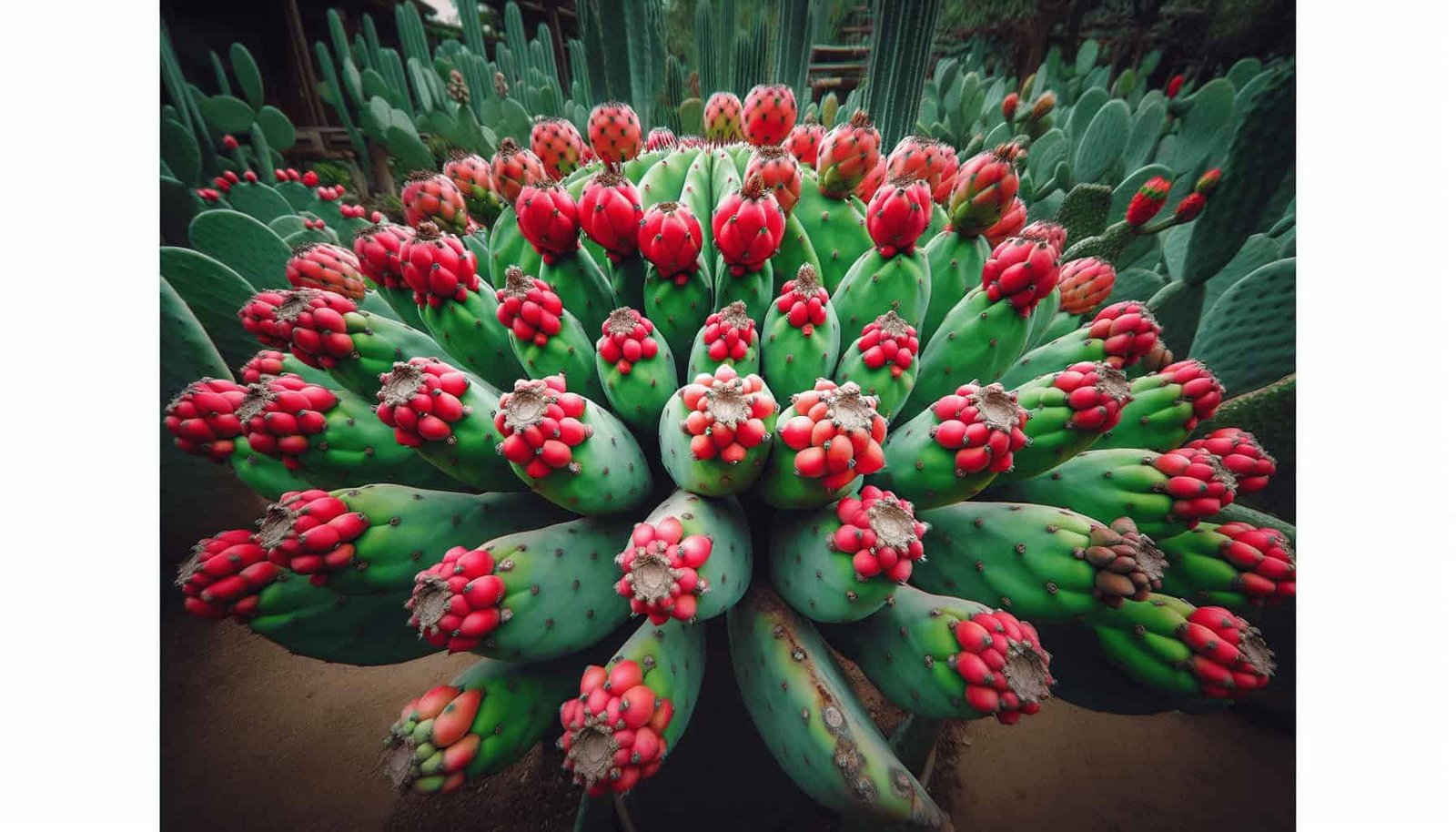Are you eager to discover how to boost the fruit yield of your nopal cactus? The journey to improving your cactus’s productivity is rewarding and fulfilling, blending your love for plants with the joy of a bountiful harvest. Whether you are a seasoned gardener or a novice enthusiast, there’s always something new to learn about optimizing the conditions for your nopal cactus to thrive.
Understanding Nopal Cactus
What Is Nopal Cactus?
The nopal cactus, also known as Opuntia or prickly pear, is renowned for its edible pads and fruit. Native to arid regions, it has adapted to thrive in harsh conditions, making it a resilient addition to your garden. Its fruit, known as tunas, is rich in vitamins and nutrients, offering an irresistible reward for your efforts.
Why Focus on Fruit Yield?
Improving fruit yield isn’t just about quantity; it’s about quality. A healthy nopal cactus not only provides more fruit but also fruit that is tastier and more nutritious. Understanding the factors that influence yield helps ensure your plants are as productive as possible.
Key Factors Influencing Fruit Yield
To achieve an abundant harvest, it’s essential to consider several factors, from soil conditions to pest control. Each plays a role in the overall health and productivity of your nopal cactus.
Soil Conditions and Fertility
Ideal Soil Type
Nopal cactus prefers well-draining soil, rich in organic matter. Poor drainage can lead to root rot and other diseases, reducing fruit yield. Sandy or loamy soils are ideal, allowing for adequate water flow and root expansion.
Nutrient Supply
Proper fertilization is critical for fruit production. Balanced fertilizers, rich in nitrogen, phosphorus, and potassium, encourage growth and fruiting. Organic compost is an excellent additive, enhancing soil fertility and structure.
Proper Planting Techniques
Site Selection
Choose a location with full sun exposure. Nopal cactus thrives in sunlight, which is crucial for photosynthesis and energy production. Avoid areas with excessive shade, which can hinder growth and fruit development.
Spacing
Adequate spacing between plants ensures they receive enough sunlight and air circulation, reducing the risk of fungal infections. A spacing of about 6-8 feet is recommended to maximize growth and fruit yield.
Watering Practices
Watering Frequency
Though nopal cactus is drought-tolerant, it still requires regular watering during the growing season to promote fruiting. Water deeply but infrequently, allowing the soil to dry out between sessions to prevent root rot.
| Season | Watering Frequency |
|---|---|
| Spring | Every 2-3 weeks |
| Summer | Every 1-2 weeks |
| Fall | Every 3-4 weeks |
| Winter | Minimal to none |
Best Practices
Water at the base of the plant, avoiding the pads to prevent fungal diseases. Early morning watering is ideal, giving the plant time to absorb moisture before the heat of the day.
Pruning and Maintenance
Pruning Techniques
Regular pruning encourages healthy growth and improves fruit yield. Remove dead or damaged pads, and thin out excess growth to allow better sunlight penetration and air circulation.
Weeding
Keep the area around your cactus free from weeds. Weeds compete for nutrients and water, potentially reducing the fruit yield of your nopal cactus.
Pest and Disease Management
Common Pests
Pests like cochineal scale, aphids, and nematodes can significantly impact fruit yield. Regular inspection and prompt treatment with appropriate insecticides or natural predators, like ladybugs for aphids, are crucial.
Disease Prevention
Fungal diseases such as root rot and anthracnose are common in nopal cacti. Ensure proper drainage, avoid overhead watering, and use fungicides when necessary to protect your plants.

Nutritional Requirements
Understanding Plant Nutrition
To optimize fruit yield, it’s important to understand the nutritional requirements of your nopal cactus. This includes the right balance of macronutrients (nitrogen, phosphorus, potassium) and micronutrients (zinc, magnesium, calcium).
Fertilization Schedule
Follow a regular fertilization schedule, particularly during the growing season. A slow-release fertilizer can provide sustained nutrition without overfeeding.
| Month | Fertilization Type |
|---|---|
| March | Balanced fertilizer (NPK 10-10-10) |
| June | Phosphorus-rich fertilizer |
| September | Potassium-rich fertilizer |
Environmental Factors
Temperature and Climate
Nopal cactus thrives in warm temperatures and can tolerate drought conditions. However, extreme heat or freezing temperatures can stress the plant, reducing fruit yield. Protect your plants during harsh weather conditions with appropriate coverings or temporary relocations.
Sunlight Exposure
Maximizing sunlight exposure is essential for photosynthesis and fruit production. Ensure your nopal cactus receives at least 6-8 hours of direct sunlight daily for optimal growth.

Propagation Techniques
Seed Propagation
Growing nopal cactus from seeds can be rewarding but requires patience. It may take several years for the plants to mature and start producing fruit.
Cladode Propagation
Propagating from cuttings (cladodes) is a faster way to ensure your nopal cactus produces fruit. Choose healthy pads, allow them to callous over, and plant them in suitable soil. This method provides a quicker path to fruit production.
Harvesting Practices
When to Harvest
Tunas are typically ready to harvest in late summer to early fall. They should be fully colored and slightly soft to the touch, indicating ripeness.
How to Harvest
Use tongs or gloves to protect your hands from the spines. Twist the fruit gently to detach it from the pad. Handle the fruit carefully to avoid bruising, which can reduce its shelf life.

Post-Harvest Care
Storage
Store harvested fruit in a cool, dry place. For long-term storage, refrigeration is ideal. Proper storage conditions prevent spoilage and extend the fruit’s usability.
Utilizing the Harvest
Nopal cactus fruit can be enjoyed fresh, juiced, or preserved through drying or canning. Exploring different culinary uses can make your harvest even more rewarding.
Troubleshooting Common Issues
Low Fruit Yield
If your nopal cactus isn’t producing as much fruit as expected, review your cultivation practices. Assess factors like sunlight exposure, watering frequency, and nutrient supply to identify potential issues.
Pests and Diseases
Effective pest and disease management is crucial. Regular inspections and timely interventions help keep your plants healthy and productive. If problems persist, consult with local agricultural extensions or experienced gardeners for specific solutions.

Sustainable Practices
Organic Gardening
Embrace organic gardening practices by using organic fertilizers and pest control methods. This approach not only benefits your nopal cactus but also promotes environmental health.
Water Conservation
Implement water-saving techniques such as mulching and drip irrigation. These methods reduce water usage while ensuring your plants receive adequate moisture.
Benefits of Improving Fruit Yield
Health Benefits
Nopal cactus fruit is rich in antioxidants, vitamins, and minerals. Improving fruit yield ensures a steady supply of nutritious fruit for your diet.
Economic Benefits
For commercial growers, higher fruit yield translates to increased profits. Improving your cultivation techniques can enhance the economic viability of your nopal cactus farming.
Ecological Benefits
A well-maintained nopal cactus contributes to biodiversity and soil health. It supports local wildlife and helps prevent soil erosion, showcasing its ecological significance.

Continuous Learning and Improvement
Stay Informed
Gardening is a continuous learning process. Stay informed about the latest horticultural practices, pest control methods, and nutritional insights to continually improve your nopal cactus yield.
Experiment and Adapt
Every garden is unique. Don’t be afraid to experiment with different techniques and adapt your practices based on observations and results. Flexibility and innovation are key to successful gardening.
Ready to enhance your nopal cactus fruit yield? Embrace these tips and techniques, share your experiences with fellow gardeners, and enjoy the fruitful rewards of your labor. Happy gardening!

